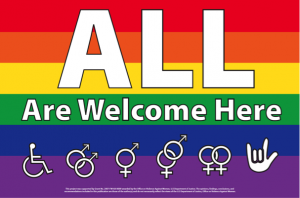Understanding your responsibility as service providers to Deaf or hard of hearing populations establishes the foundation for making those services accessible. Such responsibilities are delineated in the Americans with Disabilities Act, Section 504 of the Rehabilitation Act, and the Fair Housing Act. However, these requirements describe minimum standards for accessibility. Creating an environment and a program that is truly welcoming to Deaf individuals requires solutions that exceed these expectations.
Accessibility is typically defined by the use of assistive devices or physical accommodations such as a ramp for persons who use wheelchairs or Braille labeling on elevator buttons. However, physical access cannot be the only priority. It is not sufficient to simply provide a flashing fire alarm in your building. Understanding that accessibility goes beyond improving the physical characteristics of a building is critical for service providers. Programmatic or attitudinal practices, such as maintaining strict 9-5 access to a video phone while providing 24/7 access to a regular phone, can be devastating for Deaf individuals.
Assistive devices such as video phones, computers, and smart phones make communication with the outside world and with one another possible for Deaf persons. The importance of this type of communication accessibility cannot be overstated.
Additionally, when Deaf survivors are expected to engage in a shelter culture that does not promote accessibility because of its practices, the survivor may become further isolated and more likely to leave the shelter. Punitive or restricting practices may include refusing to provide interpreters (often excused due to the cost/budget restraints) or expecting the survivor to surrender a cell phone in the name of safety.
In the context of sexual assault programs, the issue of accessibility revolves primarily around the need for a certified and qualified sign language interpreter during individual and group counseling sessions and any other contact between the survivor and the agency. Although adding a third party during these sessions is not ideal, it provides the survivor with the option to share her story. Utilizing paper and pen or a computer during these sessions in place of an interpreter is not recommended unless the survivor specifically requests to communicate in this manner.
"By accessibility, we mean access in its broadest sense. It includes standards in accordance with the Americans with Disabilities Act and Amendments, Section 504 of the Rehabilitation Act of 1973, and state-level access requirements. Access also encompasses the development and use of policies and procedures that are trauma-informed. It is not just buildings and meeting spaces that need to be accessible. People have to remain accessible, too. A key aspect of access that will arise daily is the challenge as a provider of services to remain accessible—open and trauma-aware—during all interactions, especially ongoing relationships with organization participants." - Wisconsin’s Violence Against Women with Disabilities and Deaf Women Project (2011)
 The NRCDV Access Initiative: Documenting our progress towards greater accessibility
The NRCDV Access Initiative: Documenting our progress towards greater accessibility
This resource page describes the story of the National Resource Center on Domestic Violence Access Initiative, representing the NRCDV’s organizational commitment to accessibly and individuals with disabilities. This resource page offers definitions of key terms, provides an overview of our key activities and accomplishments, and offers lessons learned and recommendations









